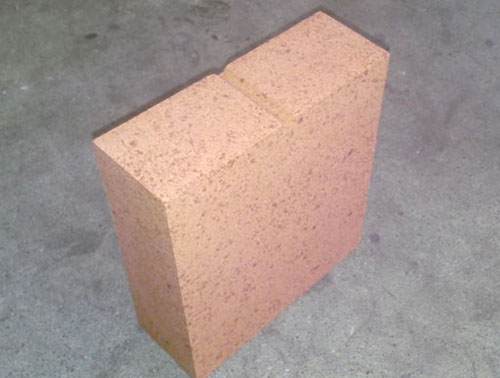Among ordinary special refractory magnesium carbon bricks, the commonly used varieties are mainly the following:
Acid
There are silica bricks clay bricks with larger amounts of concrete. Silica brick is a silicon product containing more than 93% SiO2. The raw materials used are silica, waste silica brick so on. Silicon bricks have strong resistance to acid slag erosion, but are susceptible to alkaline slag erosion. Its load softening temperature is very high, close to its fire resistance. After repeated calcination of magnesium carbon bricks for converters, the volume does shrink, even slightly expands.
差 Poor thermal shock resistance. Silicon brick is mainly used in coke ovens, glass melting furnaces, acid steelmaking furnaces other thermal equipment. Clay bricks contain 30% to 46% alumina. It uses refractory clay as the main raw material, with a fire resistance of 1580 to 1770 ° C good thermal shock resistance. It belongs to weakly acidic refractory materials, has corrosion resistance to acidic slag, is widely used. It is a class of refractory materials produced.
Neutral
The main crystalline phases in high-aluminum products are mullite corundum. The content of corundum increases with the increase of alumina content. Corundum products containing more than 95% of alumina are a wide range of high-quality refractories. Chrome brick is mainly made of chrome ore, the main crystal phase is chromite. Its corrosion resistance to steel slag is good, but its thermal shock resistance is poor, the high temperature load deformation temperature is low. Chromium-magnesium bricks made of chrome ore magnesia in different proportions have good thermal shock resistance, are mainly used as alkaline open-hearth roof bricks.

Carbonaceous products are another type of neutral refractory materials. According to the composition of the carbon-containing raw materials the mineral composition of the products, they are divided into three types: carbon bricks, graphite products silicon carbide products. Carbon bricks are made high-grade petroleum coke, tar asphalt are used as the binder, fired under the condition of 1300 ℃ isolated air. Graphite products (except natural graphite) are made by using carbonaceous materials in an electric furnace through graphitization at 2500-2800 ° C. Silicon carbide products use silicon carbide as the raw material, add clay, silicon oxide other binders to sinter at 1350 ~ 1400 ° C. It is also possible to produce silicon nitride-silicon carbide products by adding silicon carbide silicon powder in a nitrogen atmosphere in an electric furnace.
Carbon products have low thermal expansion coefficient, high thermal conductivity, good thermal shock resistance, high temperature strength. It does soften under long-term use at high temperatures, is affected by any acid alkali, has good salt resistance, is affected by the wetting of metals slag. It is lightweight is a high-quality high-temperature resistant material. The disadvantage is that it is easy to oxidize at high temperature, it is suitable to use in an oxidizing atmosphere. Carbon products are widely used in high-temperature furnace linings (hearth, hearth, bottom of furnace body, etc.) linings for melting non-ferrous metal furnaces. Graphite products can be used as liners for reaction tanks petrochemical autoclaves. Silicon carbide graphite products can also be made into crucibles for smelting copper, gold light alloys.
Welcome to inquire
+86 18640735333
Mobile: +86 18640735333 Mr. Yang
Email: Yangkaiyi0368@163.com
Address: West Outer Ring, Dashiqiao Economic Development Zone, Yingkou, Liaoning Province
